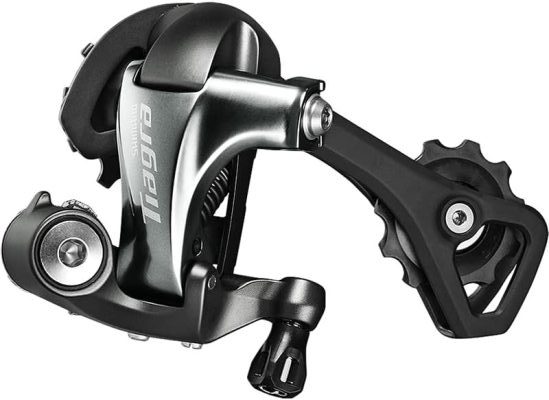From steel to carbon fiber, there’s a wide range of options to consider. In this guide, we’ll break down the different types of bike frame materials, explaining their unique characteristics and benefits.
Whether you’re a casual rider or a serious cyclist, understanding these materials can help you make an informed decision when it comes to choosing your next bike. So, let’s dive in and explore the world of steel frames, aluminum frames, carbon fiber frames, titanium frames, and composite frames. Get ready to pedal through the details and discover which material suits your riding style and preferences best.

1. Steel Frames
If you’re looking for a durable and reliable bike frame, steel frames are a great choice. Steel is known for its strength and resilience, making it a popular material for bicycle frames.
Steel frames offer excellent durability, able to withstand the rigors of off-road trails and daily commuting. The inherent stiffness of steel provides stability and a smooth ride, absorbing road vibrations for enhanced comfort. Moreover, steel frames are highly resistant to corrosion, ensuring longevity and minimal maintenance.
While steel frames may be slightly heavier than frames made from other materials, the additional weight is often offset by the increased strength and durability. With proper care, a steel frame can last for many years, making it a worthwhile investment for any cyclist seeking a reliable and long-lasting bike.
2. Aluminum Frames
Moving on to aluminum frames, you’ll find a lightweight and sturdy option for your bike that builds upon the durability of steel frames. Aluminum frames have gained popularity in the cycling world due to their excellent strength-to-weight ratio and resistance to corrosion.
Here are some key features of aluminum frames:
- Lightweight: Aluminum frames are significantly lighter than steel frames, making them easier to handle and maneuver while riding.
- Stiffness: Aluminum is a rigid material, providing excellent power transfer from your pedal stroke to the wheels, resulting in a more efficient ride.
- Durability: Aluminum frames are known for their durability and ability to withstand rough terrains and impacts without compromising their structural integrity.
- Affordability: Compared to other frame materials like carbon fiber, aluminum frames offer a more budget-friendly option without sacrificing performance.
With their combination of lightweight construction, strength, and affordability, aluminum frames continue to be a popular choice for cyclists of all levels.
3. Carbon Fiber Frames
Carbon fiber frames are known for their lightweight and excellent strength-to-weight ratio. They’re constructed using carbon fiber-reinforced polymers, which consist of carbon fibers embedded in a resin matrix. This construction technique allows for a high degree of customization, enabling frame designers to optimize the frame’s stiffness and compliance in specific areas.
Carbon fiber frames provide superior vibration-damping properties compared to other frame materials, resulting in a smoother and more comfortable ride. Additionally, carbon fiber frames offer excellent power transfer, ensuring that you maximize your pedaling efficiency.
However, it’s important to note that carbon fiber frames can be more expensive than other materials and require careful handling to avoid damage. Regular inspections are necessary to detect any signs of wear or damage that may compromise the frame’s integrity.
Titanium Frames
One advantage of titanium frames is their exceptional durability and strength. Titanium is known for its ability to withstand extreme conditions and resist corrosion, making it an ideal material for bike frames.
Here are four key reasons why titanium frames are a popular choice among cyclists:
- Lightweight: Despite its strength, titanium is surprisingly lightweight, allowing for faster acceleration and improved maneuverability on the road or trail.
- Comfortable: Titanium frames have a natural ability to absorb vibrations, resulting in a smoother ride and reduced fatigue, especially on long rides or rough terrains.
- Long-lasting: Titanium is highly resistant to fatigue and has a longer lifespan compared to other materials, ensuring that your bike frame will last for years to come.
- Customizable: Titanium frames can be custom-built to fit a rider’s specific needs and preferences, providing a personalized and comfortable cycling experience.
With its exceptional durability, strength, lightweight nature, and customization options, it’s no wonder titanium frames are highly sought after by cyclists seeking a reliable and high-performance bike.
5. Composite Frames
Continuing from titanium frames, another popular choice among cyclists for bike frames is composite frames due to their unique properties and advantages.
Composite frames are made from a combination of materials, typically carbon fiber-reinforced polymer (CFRP). These frames are known for their exceptional strength-to-weight ratio, making them extremely lightweight yet strong.
The use of carbon fiber allows for greater stiffness and responsiveness, providing a more efficient transfer of power from the rider to the pedals. Additionally, composite frames offer excellent vibration-damping properties, resulting in a smoother and more comfortable ride.
The manufacturing process of composite frames involves layering sheets of carbon fiber and applying resin to create a strong and durable structure.
Although composite frames are more expensive compared to other materials, their performance benefits make them a popular choice among serious cyclists and professional athletes.
Frequently Asked Questions
Are There Any Disadvantages of Using Steel Frames for Bikes?
Using steel frames for bikes does have some disadvantages. Firstly, steel frames can be heavier than frames made from other materials, which can make the bike feel more cumbersome. Additionally, steel frames can be more prone to rust and corrosion if not properly cared for.
How Do Aluminum Frames Compare to Steel Frames in Terms of Weight and Durability?
Aluminum frames are known for their lightweight and durability compared to steel frames. They offer a significant weight advantage, making the bike easier to handle and maneuver. Aluminum is also resistant to corrosion, which enhances its durability over time. However, aluminum frames may not be as strong as steel frames, making them more prone to damage in high-impact situations.
Are Carbon Fiber Frames Suitable for All Types of Riding or Are There Specific Disciplines Where They Excel?
Carbon fiber frames are widely regarded as the pinnacle of bike frame technology. They offer exceptional performance and are suitable for a wide range of riding disciplines. Whether you’re into road cycling, mountain biking, or even triathlons, carbon fiber frames excel in terms of weight, stiffness, and vibration damping.
Their advanced construction allows for optimal power transfer and responsiveness, making them a top choice for professional riders and enthusiasts alike.
What Are the Main Differences Between Titanium Frames and Carbon Fiber Frames?
When comparing titanium frames to carbon fiber frames, there are several key differences to consider. Titanium frames are known for their durability and strength, making them ideal for off-road and mountain biking. On the other hand, carbon fiber frames are prized for their light weight and stiffness, making them popular among road cyclists and racers. Both materials have their advantages and it ultimately depends on your riding style and preferences.
Can Composite Frames Be Repaired if They Get Damaged?
Composite frames, such as carbon fiber frames, can indeed be repaired if they sustain damage. The repair process typically involves identifying the damaged area, removing any damaged material, and then patching or reinforcing the affected area with new layers of carbon fiber.
Carbon fiber repair is a specialized skill that requires expertise and precision. However, it’s worth noting that while repairs can be made, the structural integrity and performance of the frame may be compromised depending on the extent of the damage.
Conclusion
To sum up, the world of bike frame materials is vast and varied. From the sturdy and reliable steel frames to the lightweight and agile carbon fiber frames, each material offers its own unique set of benefits and characteristics.
Choosing the right frame material ultimately depends on your preferences and riding style. So, whether you prefer the classic feel of steel or the cutting-edge performance of carbon fiber, rest assured that there’s a frame material out there to suit your needs like spokes on a wheel.





